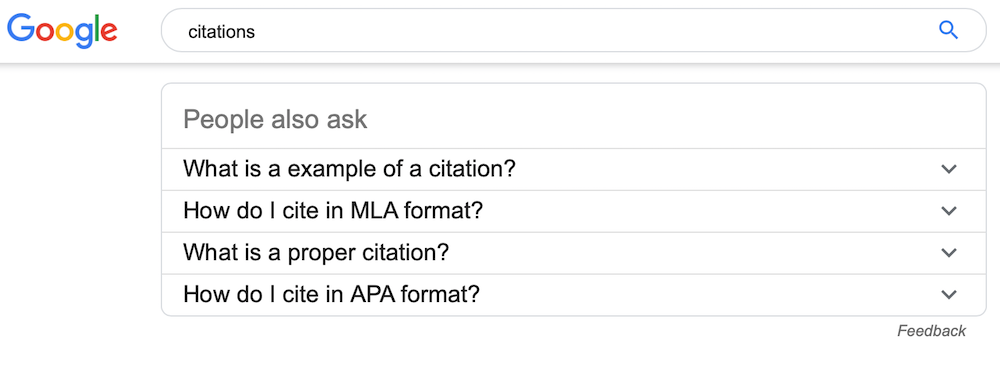When it comes to optimizing content for search engines, you might feel like there are a million things to remember. You know keywords are important, but when are you supposed to use them? Can you use multiple words or just one at a time? How do they help in the grand scheme of SEO? As a local marketer, you know the answer to most of these questions, but you also know voice search complicates things. Today we’re going to dig into long-tail keywords and how to use them to help local businesses place higher in search results, specifically voice search results.
The Long and the Short of Long-Tail Keywords
Do long-tail keywords have you baffled? You’re not alone. But don’t worry – we’ve put together a little guide to help you and other marketers, local or otherwise, with voice search optimization through long-tail keywords. After reading this guide, you’ll have a solid idea of why they’re important, what role the keywords play in a business’ online success and how to start using them right away.
What Are Long-Tail Keywords?
In a nutshell, long-tail keywords are keywords that are grouped together to make up a phrase – often in the form of a question like “How do I fix my leaky faucet?” or a statement like “best times to get an A/C serviced.” As you can see, long-tail keywords seem a bit more conversational.
We did a little experiment to test the difference between searching for a keyword and searching for a long-tail keyword. Take a look below.

We first did a search for A/C service. Since Google already knows we’re located in McKinney, TX, it pulled results for A/C repair companies in this area. Google has a hard time understanding intent just from the words “A/C service” so it also pulled information on car A/C repair and results on how to repair or service an air conditioner.
When we tried “best times to get an A/C serviced,” we got considerably different results.

Google pulled a variety of sources to determine the best times to get an A/C serviced. None of the results were businesses located near McKinney, most likely because none of the local companies have created content to answer this question.

When we modified the search to include “in McKinney” search results shifted back to showing local A/C companies. Since Google didn’t have an answer to the question in relation to McKinney, the search results shifted.
Long-tail keywords add a level of intent that is hard to achieve with shorter keywords. This brings me to my next point.
Why Are Long-Tail Keywords Important?
There is a single word to explain why long-tail keywords are important: intent. As shown in the example above, search engines have a hard time understanding intent from a single keyword – it’s not the same to look for “A/C Service” as it is to look for “best times to get an A/C serviced” or “best times to get an A/C serviced in McKinney.” Incorporating long-tail keywords into a business’ content will help search engines deliver more accurate results. Local businesses and brands that deliver content that answers these intent-based queries will rise above the competition.
Another important aspect of long-tail keywords is the growing popularity of voice search. Back in the initial days of online search engines, it was simple for people to type in one word and hit “search.” Now, with voice assistants (like the Amazon Echo and the Google Assistant) in one out of every six Americans’ homes, people are searching differently. They’re talking instead of typing.
Researchers have found that voice search queries are generally longer, with seven or more words included. Humans are more likely to speak long sentences than they are to type them.
Businesses need to continue to pay attention to important keywords for their industries, but they also need to pay attention to how people are using the keywords to search for their services with voice-enabled devices. If searchers are using multiple words or a certain phrase repeatedly, it’s time to optimize for that popular search query.
The Pros of Long-Tail Keywords
Let’s be honest: cramming keywords into a blog can feel unnatural, and when Google and readers stumble across the content, they can tell it’s forced. That’s why content writers love long-tail keywords. It’s easier to build high-quality content around conversational phrases than around a handful of words.
Additionally, long-tail keywords are more specific, which means consumers can find answers easily and quickly.
Because algorithmic updates and voice search have recently changed how search engines function, businesses can get ahead of the competition and stand out to more searchers. People use voice search when they’re on mobile devices, sitting at computers or walking around their smart homes – businesses should consider these search habits and optimize for them to be the real winners.
How Do I Research Long-Tail Keywords?
Businesses have been checking for LSI keywords (Latent Semantic Indexing) for many years now, but how do they find the long-tail keywords that will best benefit their sites? Here are four ideas.
- Use the autocomplete results on Google. For example, if a business does listing management services, like we do, one of our main keywords would be “citations.” We typed the main keyword into the search bar and saw phrases like “citations needed” and “citations definition” appear, giving us an idea of potential long-tail keywords we could use.
- Another option is to use the “People also ask” section on Google. When we searched for “citations”, a keyword we would definitely want to optimize for as a listing management services provider, the below questions came up.

- Google AdWords has a “Keyword Planner” that can help generate ideas for relevant keywords, both short and long. By typing in a single word, the user can easily find dozens of others that relate to the topic.
- To find other pertinent long-tail keywords you can examine what other businesses in the industry are using. If a competitor is ranking highly with a specific long-tail keyword, then other similar businesses would probably benefit from it, too.
Ways to Incorporate Long-Tail Keywords in Posts
Although including long-tail keywords in any way can be beneficial, there are certain places in content where they’ll do the most good. For instance, including strong long-tail keywords in headlines can make the content shareable and easy to find on search engines. Additionally, these keyword-rich headlines will appear more often in voice search results.
As with any kind of writing, businesses need to use natural language and make their content easy to read. Above everything else, Google cares about its users’ experiences. As a result, it won’t place highly if it’s littered with forced keywords, no matter how short or long they may be. Keep the content smooth and organic without forcing in the long-tail keywords.
Furthermore, it’s vital that businesses share their posts in engaging, strategic ways. Producing engaging content is only part of the work; the rest is up to social media, email marketing and other forms of content sharing.
The Moral of the Story When It Comes to Long-Tail Keywords and Voice Search
Remember that most humans don’t type as they talk. There’s a difference between a typed search and a voice search, and that difference is key when it comes to creating and optimizing content. Comscore predicts that, by 2020, 50 percent of all online searches will be made by voice. This isn’t a passing trend – without voice search optimization, businesses will lose their chances of ranking highly and gaining conversions. We have a downloadable guide on voice search optimization you may want to check out, too.
The Ultimate How-to Guide to Long-Tail Keywords and #VoiceSearch Optimization by @Advice_Local #SEO
Click To Tweet
At Advice Local, we’re experts at determining if a business is voice search-ready! Our revolutionary algorithm, the first of its kind, in our Voice Search Readiness Score can indicate how likely a business is to get found online, and the results are simple and straightforward. Run our free online visibility report today to see how findable your local business clients are in voice search!
If you are a local marketer, agency, brand or franchise, request a demo today to learn how we can help you and each of your clients or business’ locations stand out in desktop, mobile and voice search results.
The post The Ultimate How-to Guide to Long-Tail Keywords and Voice Search Optimization appeared first on Advice Local.